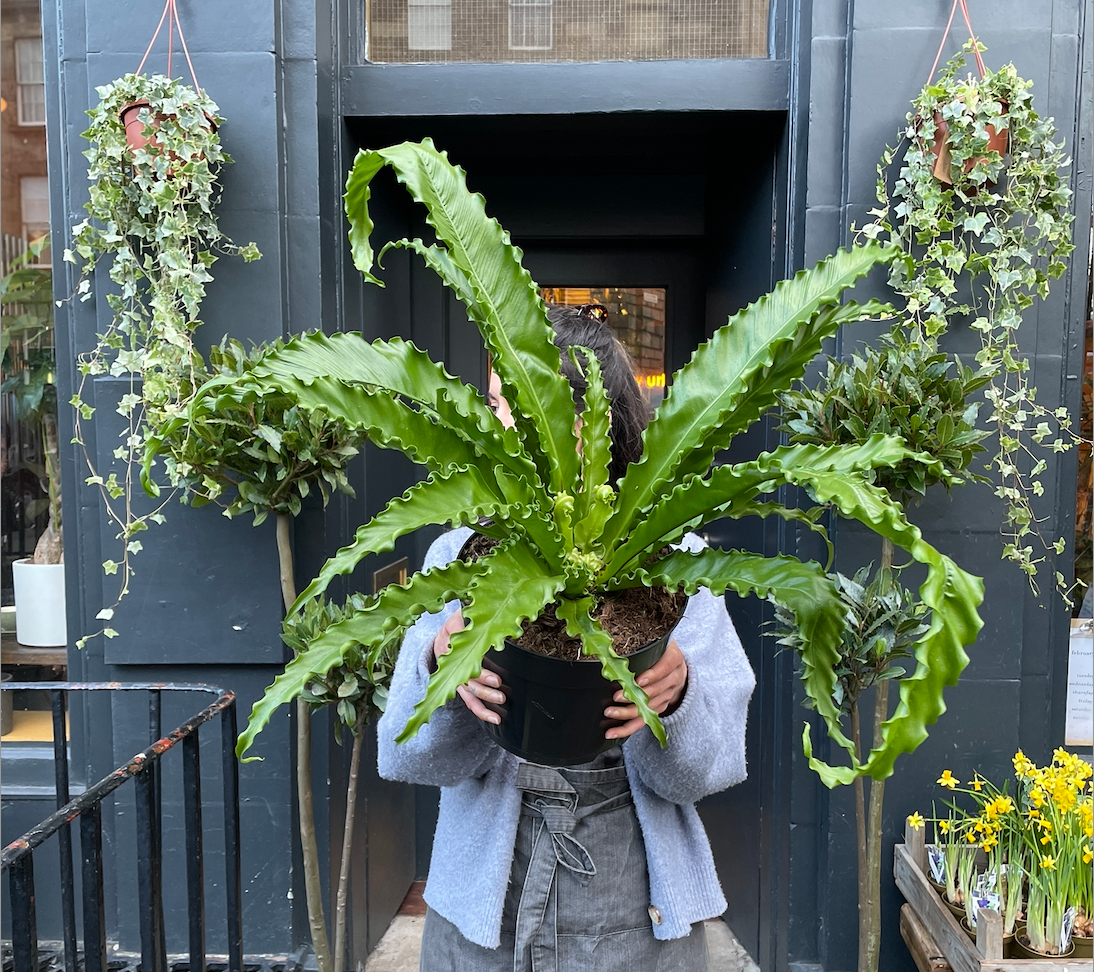
Caring for Ferns indoors in the UK
A brief history of ferns
There are over 9,000 fern varieties and this ancient group of plants date back to Carboniferous times and can often be found in fossils.
Ferns are commonly found in forests in tropical and temperate zones across the world. These gorgeous plants are renowned for their lush, splayed fronds and have adapted to grow in a whole host of different environments. Many varieties favour terrestrial living in damp soil on the forest floor whilst others grow epiphytically on the crown, trunk base or on tree branches. Other types prefer to cling on to rocky habitats in the cracks in cliff faces and rock crevices. One example of this is the Maidenhair Fern which can be found growing in the cracks between rocks - often near waterfalls. Other commonly seen varieties include Phlebodium, Nephrolepis and Asplenium. look to the Humata tyermannii for something more unusual!
Did you know the Asparagus setaceus, also known as the Asparagus Fern, is not a true fern? Earning their common namesake from its similarities in appearance and care, this genus is a member of the Asparagaceae family and unlike ferns is not pet friendly.
Unlike most plants, ferns do not have an anther or stigma to reproduce through pollination. Instead, ferns disperse spores which are carried by the wind to increase their numbers. It is said that during the early 20th century, ferns were the only variety of plants female botanists were allowed to study due to the plants lack of male and female reproductive systems and for a long time fern experts were predominantly female. In our homes, we can multiply our fern collection through division.
Caring for ferns in UK homes
There are so many different varieties of ferns to choose from, but let’s narrow it down to varieties best kept indoors in the UK.
Generally, ferns grow in areas with dappled light and will do best positioned in bright to medium, in-direct light. They will also tolerate shadier areas. For thriving ferns ensure your plant is kept in high levels of humidity by frequently misting the fronds throughout the week. In addition to this, these plants do well when positioned in particularly humid spots such as kitchen and bathrooms, or even a closed terrarium. Struggle to remember to mist? Why not try a pebble tray to allow water to evaporate around the plant.
When caring for ferns it is important to keep their compost moist, but not waterlogged. In spring and summer, water when the surface of the compost is dry to the touch. Ferns will need watered less frequently in the autumn and winter as the soil will not dry out as quickly in cooler temperatures. During the Growing Season, in the Spring and Summer months, it is important to feed your ferns once every 4 weeks to replace the nutrients in their compost. We recommend Liquid Gold Leaf as a high-quality houseplant feed. This is also the time of year you should check if your fern needs to be repotted. Look out for roots growing out of the drainage holes at the base of the pot. Alternatively, gently remove the pot and check the base of the compost for densely spiralling roots. These are both signs that your plants have run out of growing room and need to be transferred into a larger pot. To repot choose a pot with drainage holes that is up to 5cm larger than the plants current pot. Ideally, Ferns need a compost made up of 70% Soil.Ninja Base Mix, 10% Worm Castings and 20% Sand.
Our tips and tricks and commonly asked questions about ferns
Why does my fern have dry, brown leaves?
Dry brown leaves usually appear on ferns due to a lack of humidity so up your misting to keep fronds looking fresh. This can also happen if your fern is positioned too close to a heat source so make sure to place it away from any radiators and fireplaces. Sun scorch can also be identified by dried out patches so avoid placing ferns in direct sunlight on a windowsill.
Why is my fern yellowing and droopy?
Yellowing can also be caused if the fern has become too cold or the soil is holding on to too much moisture. This is more likely to happen in the autumn and winter when the temperature is cooler so be sure to adapt your watering schedule accordingly!
Does my fern have pests?
If your Fern looks sad and you don’t know why it could be there are pests lurking in the leaves and feeding on the plant. Firstly, ensure that you isolate your plant from your collection. Wash down the leaves with warm, soapy water and then spray down the leaves and top of the compost with SB Invigorator. Repeat once a week. If there are an unmanageable number of bugs, cut back all the fronds and place a clear plastic bag over the plant. If the root system is still healthy these plants will grow back with the right care. There is a reason that ferns have survived since ancient times so don’t be afraid to prune them heavily!
Check out our website or visit us in store to peruse our selection of ferns.



